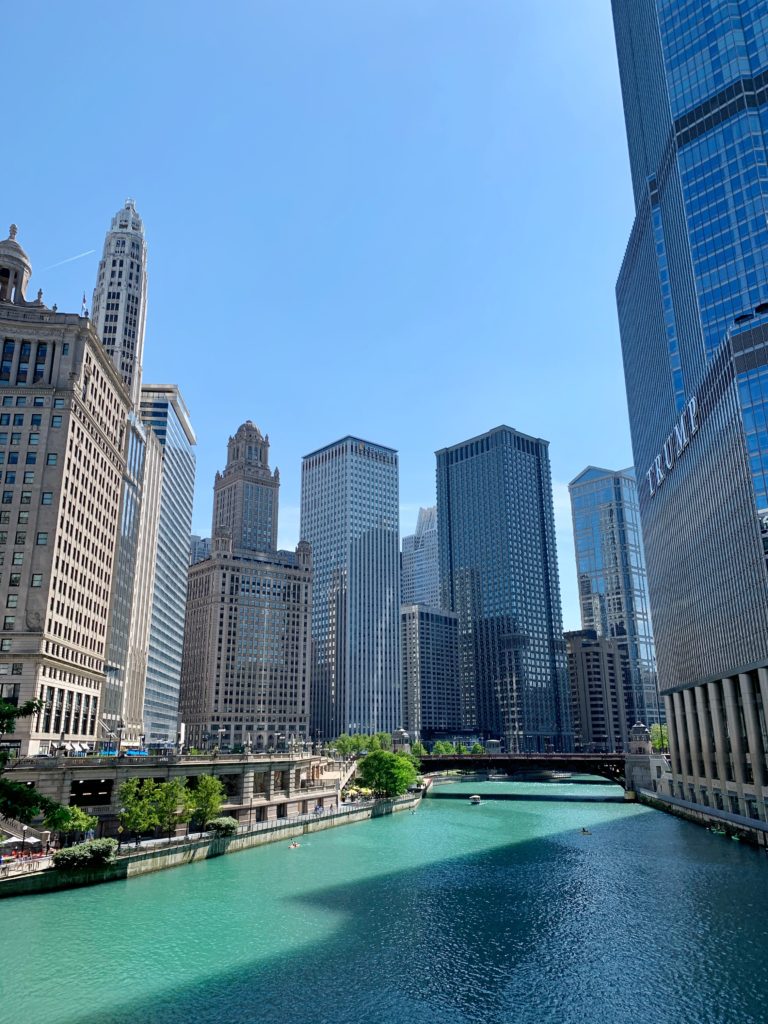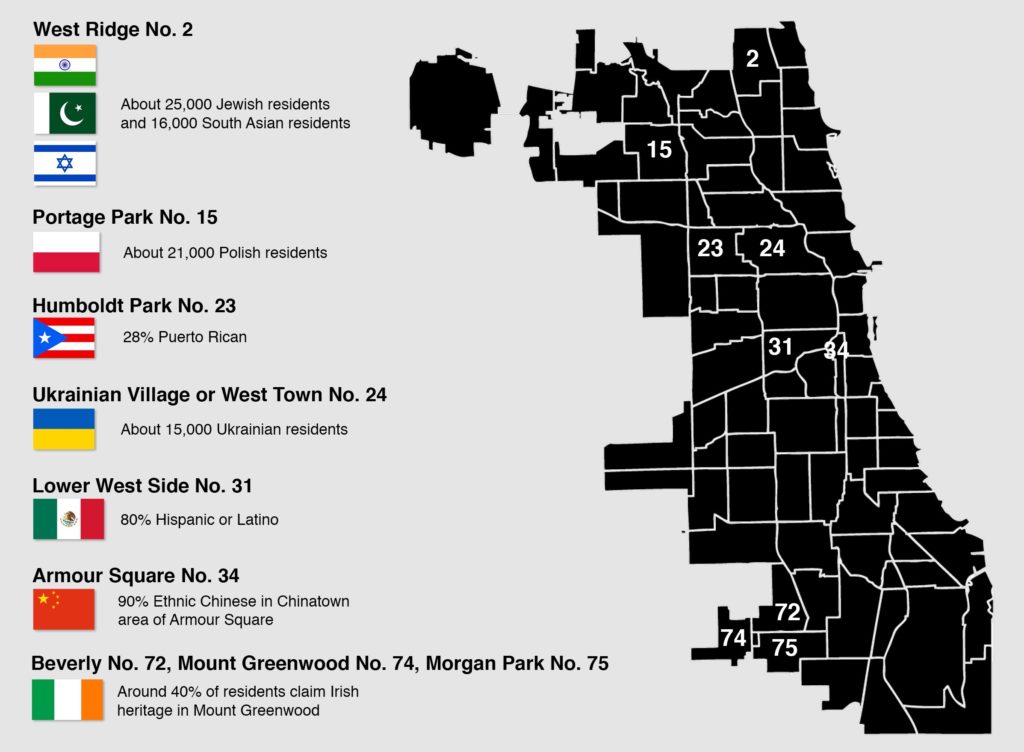Chicago: Profile of a Global City

City of Paradox
Woven into the fabric of the American story stands a mighty city. A city of paradox– grit and charm, beauty and decay, hopes and dreams tragedies and nightmares. Pressing into the tension of it all, Chicago still holds its head high in the landscape of the nation. A single gaze at the ‘Windy City’s’ regal skyline produces an insatiable desire to see and explore more. The scale and grandness of Chicago draws comparisons to its great American counterparts, Los Angeles and New York City. But, without gaining a grasp of its history, the ‘Second City’s’ global appeal will remain a geographic anomaly for its many visitors. Afterall, it is located atop a swampland in America’s Midwest, not exactly a port city on one of America’s ocean coasts. But it was the completion of the Erie Canal in 1825 that transformed Chicago from the ultimate heartland city into a pre-eminent American fortress of trade and commerce between the Great Lakes Region and the Atlantic coast. It is exactly this kind of portrait that contributes to the pride of Chicago’s rich history.
The Spirit of a City
Chicago-Naperville-Elgin is the 3rd most populous metropolitan area in the US. This far-reaching urban sprawl is often referred to as ‘Chicagoland’, which includes the city of Chicago and its many suburbs. Infamously called the ‘Windy City’ because of its long-standing reputation for political corruption, Chicago has garnered other peculiarities worth noting. After the Chicago Fire ravished the city in 1871, Chicago faced the great challenge of rebuilding its infrastructure and finding a new identity. It was the blue-collar grit of Chicagoans towards the end of the 19th century and into the 20th that put the city on the map as industrial giant and an American hub for manufacturing. It was also the hard-working spirit of the people, that placed Chicago on the cutting edge of innovation. The city’s history boasts of great achievements such as the construction of the world’s first skyscraper, making Chicago a leader for many decades in the skyscraper boom. Another notable feat was the city’s ‘L’, or elevated public train system, being the first of its kind in all of the world, serving as a template for ease of transport in dense urban centers. Today, the city is described as “an efficient economic powerhouse” by World Business Chicago boasting one of the “most diverse economies in the nation,” hosting over 36 Fortune 500 company facilities and 31 in the S&P 500.[1]
Rich Ethnic Diversity
It is impossible to fully grasp Chicago’s grandeur and innovation without noting the significance of the many hands that build it. From its founding until now, it has always been a city of immigrants, making it one of America’s great cultural ethnic ‘melting pots.’ It is the distinctiveness and complexity of these communities that has allured the intrigue of urban sociologists for over the course of a century. It was the Chicago School of Urban Sociology that became the most significant ‘laboratory’ for urban studies from the period of 1915-1935, producing the famed sociologist, Louis Wirth along with his groundbreaking article, “Urbanism as a Way of Life.”[2]
 Chicago has 77 distinct neighborhoods, each with a story to tell about its place in the formation of the city. Just make a quick stop to Ukrainian Village and imagine walking around the streets of Kiev. Perhaps consider an evening stroll in the heart of Chinatown, skyline in the backdrop, and ‘transport’, for a moment, to Beijing or Shanghai. Take a trip down Devon Ave in West Rodgers Park for a colorful taste of South Asia. Drive a bit further down the street to arrive at what appears to be a snapshot of Jerusalem in a dense Hasidic Jewish community. Latin-American neighborhoods dot the city’s West Side, Irish communities lay to the Southwest, and thousands of Poles to the northwest. Head down to the city’s sprawling southside to see a product of the 20th century’s Great Migration (1916-1970), a mass exodus of over 6 million African-Americans from the largely segregated rural South to the cities of the North in search racial equality and better employment opportunity. This mass influx of people to Chicago’s southside in particular, transformed the demography of the city.[3] Today, it is this section of the city where nation’s 2nd largest African-American population resides.
Chicago has 77 distinct neighborhoods, each with a story to tell about its place in the formation of the city. Just make a quick stop to Ukrainian Village and imagine walking around the streets of Kiev. Perhaps consider an evening stroll in the heart of Chinatown, skyline in the backdrop, and ‘transport’, for a moment, to Beijing or Shanghai. Take a trip down Devon Ave in West Rodgers Park for a colorful taste of South Asia. Drive a bit further down the street to arrive at what appears to be a snapshot of Jerusalem in a dense Hasidic Jewish community. Latin-American neighborhoods dot the city’s West Side, Irish communities lay to the Southwest, and thousands of Poles to the northwest. Head down to the city’s sprawling southside to see a product of the 20th century’s Great Migration (1916-1970), a mass exodus of over 6 million African-Americans from the largely segregated rural South to the cities of the North in search racial equality and better employment opportunity. This mass influx of people to Chicago’s southside in particular, transformed the demography of the city.[3] Today, it is this section of the city where nation’s 2nd largest African-American population resides.
Woes
Chicago has much to be proud of with its many accomplishments and its great diversity. In the midst of what seems to be a constant battle of adversity, Chicago has somehow managed to emerge as a global city. While its neighboring heartland cities have failed to reestablish themselves after steep economic decline in industrial manufacturing, Chicago has successfully evolved to meet the economic demands of today’s world whether it be in technology, entertainment, finance, or education.
Chicago ranks high in global city indices[4], but with transformation often comes marginalization. It is a city that has endured great suffering due to decades of sustained racial disharmony, gang violence, political corruption, and economic decline. Massive population segments in the city, mainly immigrant groups and African-Americans, remain stuck in the margins of a polarizing wealth gap. Unaffordable housing, sparse access to nutritional food options, and uneven educational opportunities are just a few of the issues that currently plague the city.[5] One of the most tragic developments is recent years has been the spike in violent crime in many neighborhoods of the city. Many of Chicago’s impoverished neighborhoods are continuously terrorized by street gangs and ravished by drugs, rendering them unsuitable for young families to raise their children.
Hope for the City
Chicagoland has historically been one of the most Roman Catholic areas in America, but there is also a storied legacy of Protestant missions in the region. Notable historical figures such as D.L. Moody, Billy Graham, Jonathan Blanchard, and Mary McLeod Bethune saw significant portions of their ministries take off and flourish in Chicagoland. Today, there is no shortage of Christian institutions of higher education in the area. To name a few; Moody Bible Institute, Wheaton College, and Trinity Evangelical Divinity School have long established themselves as reputable training academies for clergy and missionaries, sending many of their students into the city for kingdom purposes. Today, the religious landscape of the Chicago metro boasts of a Christian majority of 71%, but only 16% of that population would consider themselves to be Evangelical Protestant.[6] At present-day count, there are over 3,000 evangelical congregations in the city of Chicago. Though this may appear to be a large number, the city is still desperate for greater kingdom partnership and advancement. The Lord has been at work in Chicago for a long time. Through the faithfulness of His people, He will continue establish His reign in the city.
[1]“Strong, Diversified Economy,” World Business Chicago, accessed September 30, 2020, http://www.worldbusinesschicago.com/economy/
[2]Louis Wirth seeks to construct an adequate sociological definition of the city, while exploring the phenomena of rapid urbanization and its impact on the social behavior of its dwellers. Louis Wirth, “Urbanism as a Way of Life,” American Journal of Sociology, vol. 44, Number 1, 1938, pp 3-10. JSTOR, www.jstor.org/stable/2768119.
[3]For a detailed treatment of the Great Migration, its causes, and how it transformed the landscape of America, see Isabelle Wilkerson,Warmth of Other Suns: The Epic Story of America’s Great Migration (S.l.: PENGUIN BOOKS, 2020).
[4]Chicago is considered an Alpha city by the Globalization and World Cities (GaWC) Research Network. According to GaWC, there are highly impactful world cities that link major economic regions and states into the world economy.” See GaWC. The World According to GaWC: (2020). Available at: https://www.lboro.ac.uk/gawc/gawcworlds.html.
[5]Ray Bakke touches on the idea of urban ghettoes functioning as money “sieves”, with large sums of cash flowing through them, with the communities themselves lacking access to the power necessary for the just allocation of the money. This problem contributes to the perpetual depletion of opportunity for economic growth and development in urban poor communities. Bakke gives an example of this problem in a case study lecture about how Chicago’s impoverished neighborhoods that are deplete of the resources necessary for their flourishing and ways that the church can step into this gap. Seattle Community Church, “Cities, Guidebook to the Nations 2-01, Ghetto as a Money Sieve-Ray Bakke,” October 31, 2018, video, 25:37, https://youtu.be/Ed3TC8QvW4w.
[6]“Religious composition of adults in the Chicago Metro Area” Pew Research Center, Washington, D.C. (2014), https://www.pewforum.org/religious-landscape-study/metro-area/chicago-metro-area/
